Understanding and Overcoming Emotional Shutdown in Recovery
Emotional shutdown is a common deterrent in mental health recovery, characterized by numbness, disconnection, and physical symptoms that mirror the body's survival response to overwhelming trauma and stress. Recognizing and breaking these patterns are crucial steps toward emotional resilience and healing. This article explores the underlying neurological mechanisms, signs, causes, and practical strategies for overcoming emotional shutdown to foster lasting recovery.
Foundations of Nervous System Responses in Emotional Shutdown
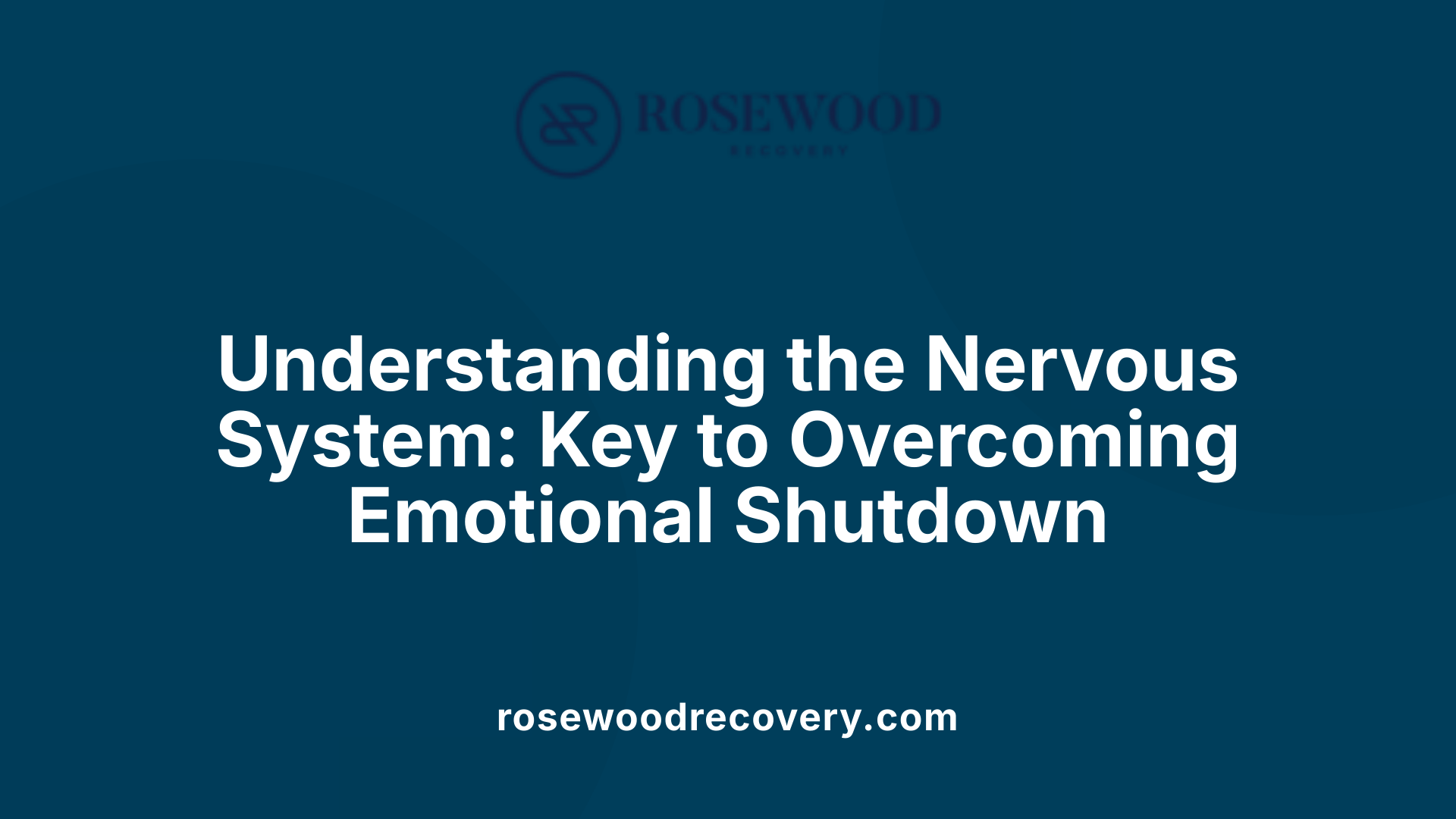
What is the polyvagal theory and its three components: ventral vagal, sympathetic, and dorsal vagal systems?
Polyvagal theory, developed by Dr. Stephen Porges, explains how our nervous system manages different states of connection, fight-or-flight, and shutdown. It identifies three main response systems:
- Ventral Vagal (Connection Mode): Promotes feelings of safety, social engagement, and connection. It helps us feel calm, safe, and ready for social interaction.
- Sympathetic (Fight or Flight): Activates when we face threat, preparing the body for action through increased heart rate, rapid breathing, and alertness.
- Dorsal Vagal (Shutdown Mode): Engages in response to overwhelming threat, leading to dissociation and immobilization.
Understanding how these systems work helps explain our reactions to stress and trauma. It clarifies why sometimes we feel energized and reactive, while other times we feel numb or disconnected.
Physiological effects of dorsal vagal shutdown, including dissociation, physical symptoms, and body posture.
When the dorsal vagal system dominates, the body enters shutdown mode. This state can cause feelings of dissociation, numbness, hopelessness, and physical sensations such as slowed breathing, constricted bronchi, reduced heart rate, and physical collapse. Posture often becomes curled or collapsed, as if withdrawing inward or protecting vital organs.
This response is like a hibernation mode—serving as a last resort defense when a threat seems inescapable. It effectively turns off emotional and physical engagement to preserve life from an overwhelm.
Role of trauma and chronic stress in activating the shutdown response.
Traumatic events or ongoing stress can cause the dorsal vagal response to become more easily triggered or long-lasting. Repeated activation can lead to chronic emotional numbness, disconnection from others, and difficulty feeling or expressing emotions. Over time, this can impair relationships and personal well-being.
Chronic stress keeps the nervous system in a heightened state of alert, sometimes tipping into shutdown when the threat becomes intolerable. Thus, understanding trauma’s impact on neural responses emphasizes the importance of recovery strategies that target nervous system regulation.
How understanding nervous system responses can inform recovery strategies.
By recognizing whether we are in connection, fight, or shutdown mode, individuals can apply tailored strategies to regulate their nervous system. For example, drifting into shutdown might be managed by engaging social connection, movement, or mindfulness to activate the ventral vagal system.
Therapeutic approaches like gradual body movement, building trust, and normalization of responses can help shift the nervous system into a calmer, more engaged state. Long-term recovery involves techniques like movement exercises, emotional regulation practices, and professional therapies such as EMDR, which process trauma safely.
Awareness of these physiological responses guides both individuals and therapists to develop effective methods for recovery, reducing the duration and impact of shutdown episodes.
Recognizing the Signs and Symptoms of Emotional Shutdown
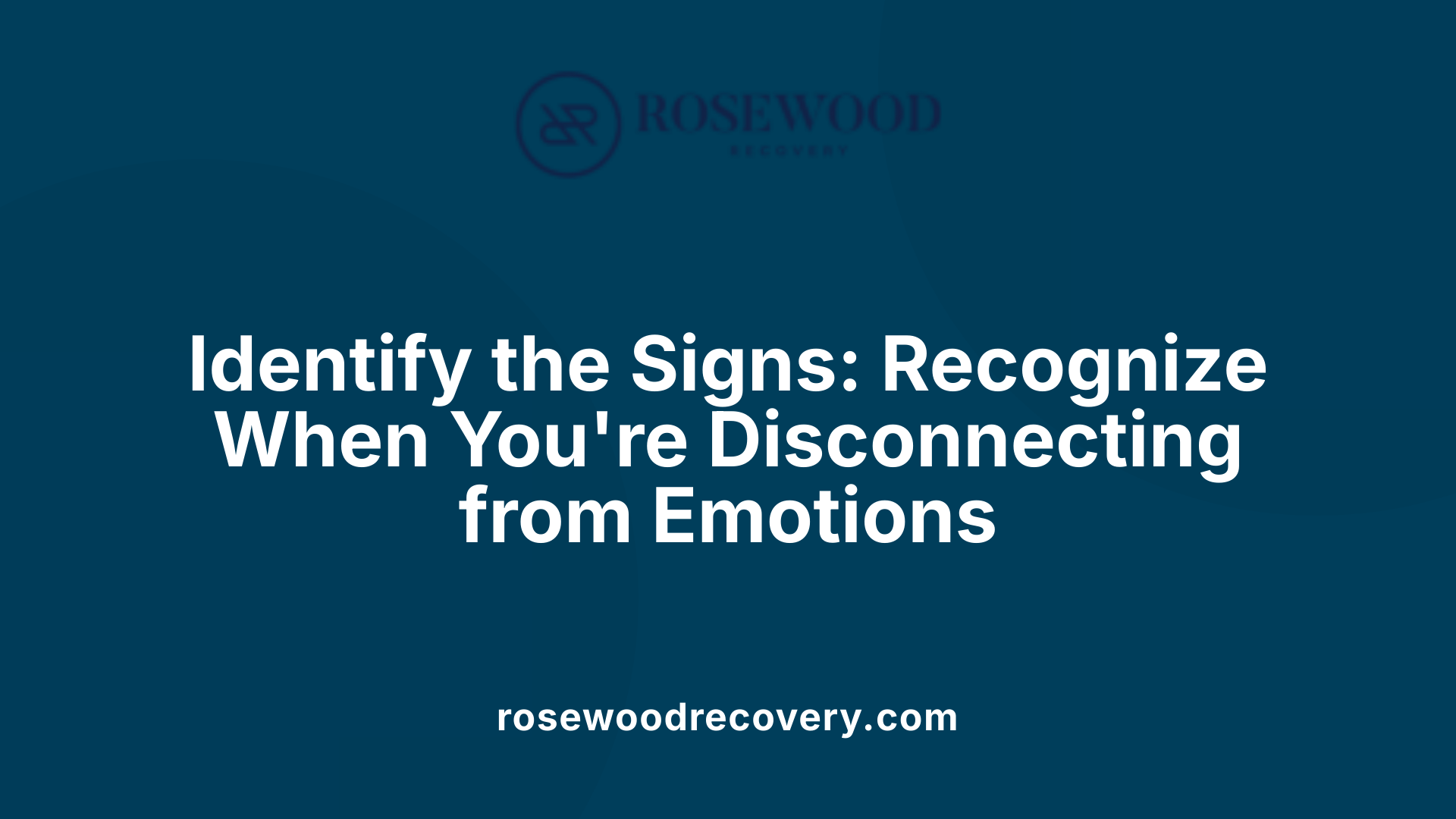
What are the signs of emotional shutdown?
Emotional shutdown manifests through various physical, behavioral, and emotional signs that indicate a person is disconnecting from their feelings. One of the primary indicators is feeling numb or disconnected from emotions, where positive feelings like happiness or excitement are difficult to access. Individuals often struggle to identify or express their emotions and may avoid conversations or situations that involve feelings.
Physically, emotional shutdown can present as fatigue, muscle tension, slowed breathing, a reduced heart rate, and overall physical lethargy. These symptoms reflect the body's response to internal stress and an attempt to conserve energy.
Behaviorally, those experiencing emotional shutdown tend to withdraw from social interactions, isolate themselves, and demonstrate decreased motivation for daily activities and hobbies. Some might turn to overeating, substance use, or avoidance as mechanisms to cope. This detachment can also lead to difficulties in maintaining close relationships, as there's often a sense of emotional detachment from oneself and others.
It is crucial to recognize these signs early because prolonged emotional shutdown can further impair relationships and personal well-being. Addressing these symptoms through therapy and emotional reconnecting techniques can help individuals regain access to their feelings and foster healthier emotional functioning.
Causes and Triggers of Emotional Shutdown within Trauma and Mental Health Contexts
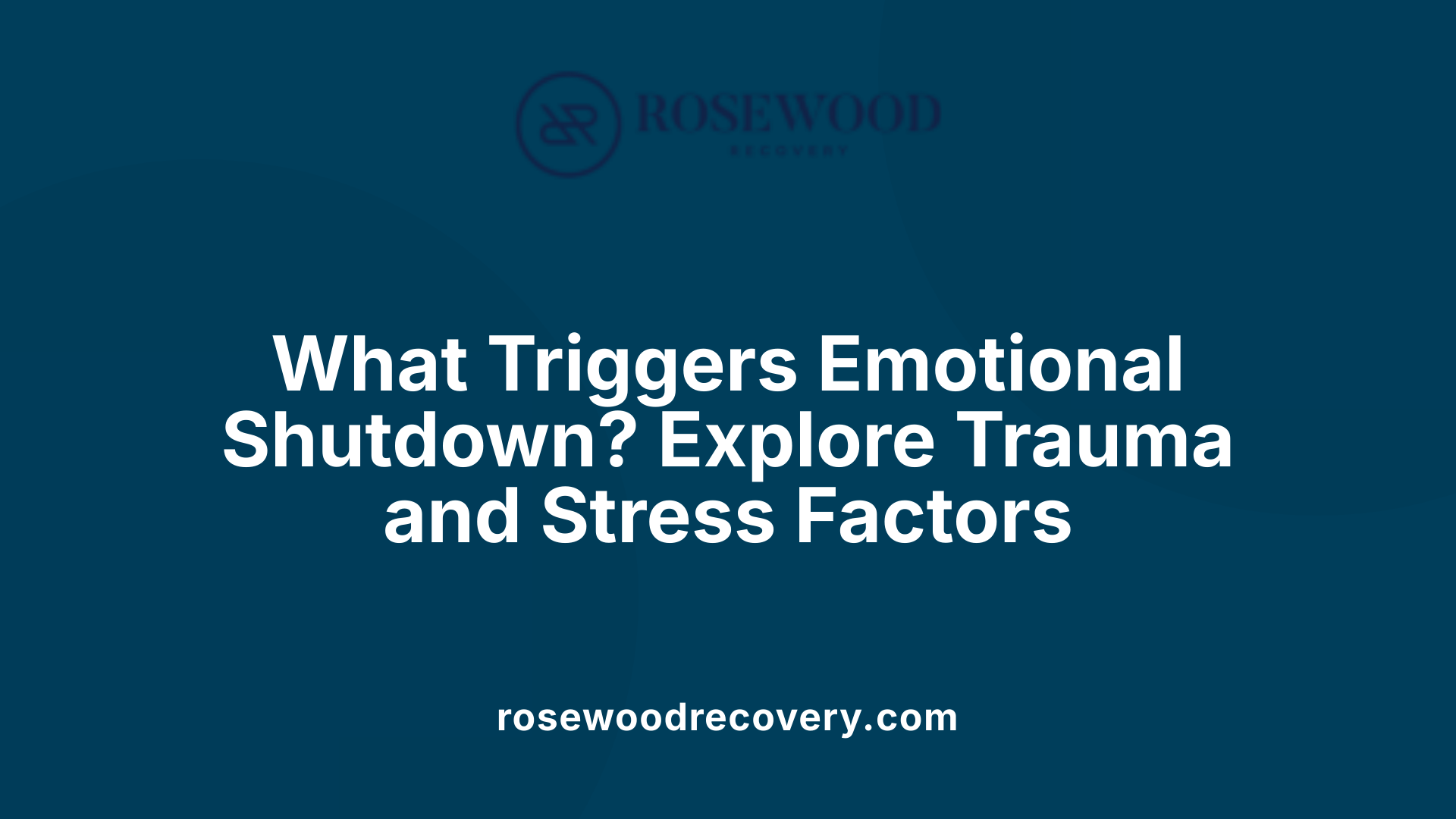
What causes emotional shutdown?
Emotional shutdown is often a response to intense or overwhelming experiences that the body and mind perceive as threatening or unbearable. It primarily occurs as a protective mechanism, mediated by the dorsal vagus nerve, which is part of the parasympathetic nervous system responsible for the shutdown or freeze response.
Traumatic experiences such as abuse, neglect, grief, and overwhelming stress are common catalysts. When a person encounters such stressors repeatedly or intensely, their nervous system may default to shutting down to prevent further emotional or physical damage.
In addition to trauma, mental health conditions can also contribute to emotional disconnection. Conditions like depression, post-traumatic stress disorder (PTSD), borderline personality disorder (BPD), and schizophrenia often involve symptoms of emotional numbness, disconnection, or detachment.
Childhood trauma and conditioning play a significant role. Early life experiences where caregivers invalidated or ignored emotional responses can make individuals more prone to dissociating or withdrawing emotionally as a form of self-protection.
Certain medications, especially selective serotonin reuptake inhibitors (SSRIs), may have side effects that include emotional blunting or numbness, further fueling feelings of disconnection.
Overall, emotional shutdown serves an evolutionary purpose, helping individuals manage unbearable suffering temporarily. However, when it becomes chronic or persistent, it can impair relationships, hinder recovery, and diminish quality of life.
Strategies and Techniques for Reconnecting with Emotions and Overcoming Shutdown
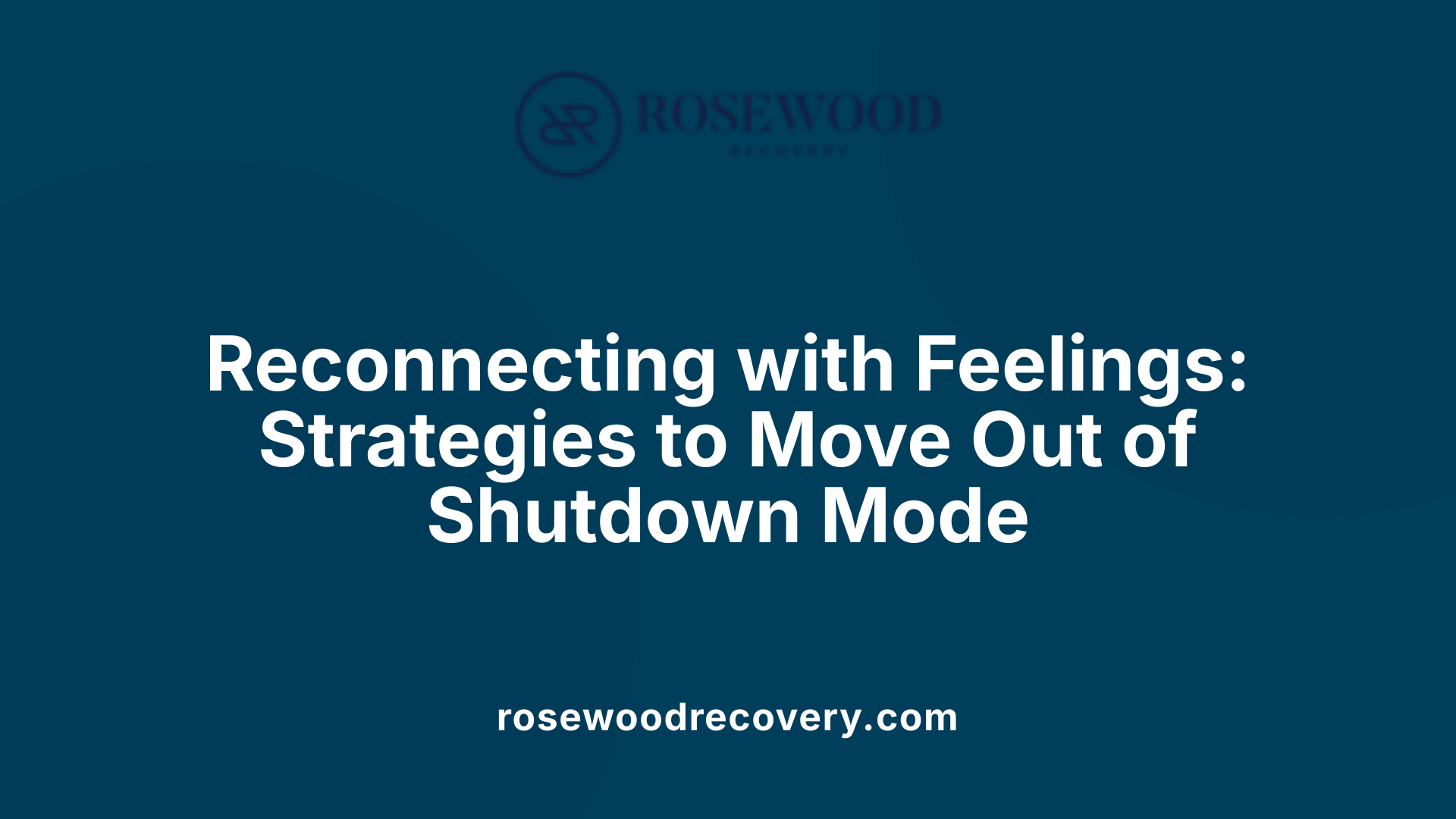
How do I get out of shutdown mode?
Overcoming shutdown, a state where feelings of numbness, dissociation, and physical collapse dominate, involves gentle yet intentional physiological activation. One effective approach is using grounding techniques. These include deep, slow breathing exercises, such as inhaling for four seconds and exhaling for six, to calm and re-engage the nervous system.
Engaging the senses can also be helpful. Holding onto textured objects, feeling the ground beneath your feet, or touching cold or warm surfaces can bring your awareness back to the present moment. Light movement like stretching, gentle yoga, or slow walks can promote activation without overwhelming your system.
Creating a safe and quiet environment is essential for this process. Mindfulness practices, including focused attention on bodily sensations or sensations of sound, touch, or smell, support a gradual shift from shutdown to a more alert state.
In therapy, building trust and safety is crucial. Establishing a trust-based relationship with a trauma-informed professional helps facilitate this process. If shutdown responses are persistent and interfere with daily life, consulting healthcare providers for personalized strategies is highly recommended.
Building trust and safety—trust-based therapeutic relationships
A strong, trustful connection with a therapist provides a secure space for exploring difficult emotions and physical states. This relationship fosters safety, encouraging clients to gradually re-engage with their feelings and body sensations.
Engaging in body movement, assertiveness, and social connection
Physical activities, even gentle ones, help reawaken dormant emotional responses. Assertiveness exercises and social engagement further reinforce feelings of safety and connectedness, essential for recovery from shutdown.
Practical exercises like journaling, movement, music, art, and nature for emotional expression
Expressive activities such as journaling about feelings, making music, drawing, or spending time outdoors help process and release repressed emotions. These practices activate different parts of the brain and body, supporting emotional integration.
Grounding techniques such as sensory input, deep breathing, and body awareness
Grounding techniques include focusing attention on sensory experience, practicing mindful breathing, and developing bodily awareness through mindfulness exercises like the body scan. These methods anchor individuals in the present moment, reducing dissociation.
Somatic and subconscious emotion reprogramming exercises like breathwork, visualization, and sensory grounding
Techniques such as the Calm Rehearsal Breath, sensory grounding loops, or visualization exercises imagine a confident, grounded self. These methods help rewire involuntary responses, creating safety around emotional triggers and promoting resilience.
By incorporating these strategies, individuals can gradually shift from shutdown states into a more connected, balanced emotional experience. Consistent practice and professional support significantly enhance recovery outcomes.
The Role of Trauma-Informed Therapies in Overcoming Emotional Disconnection
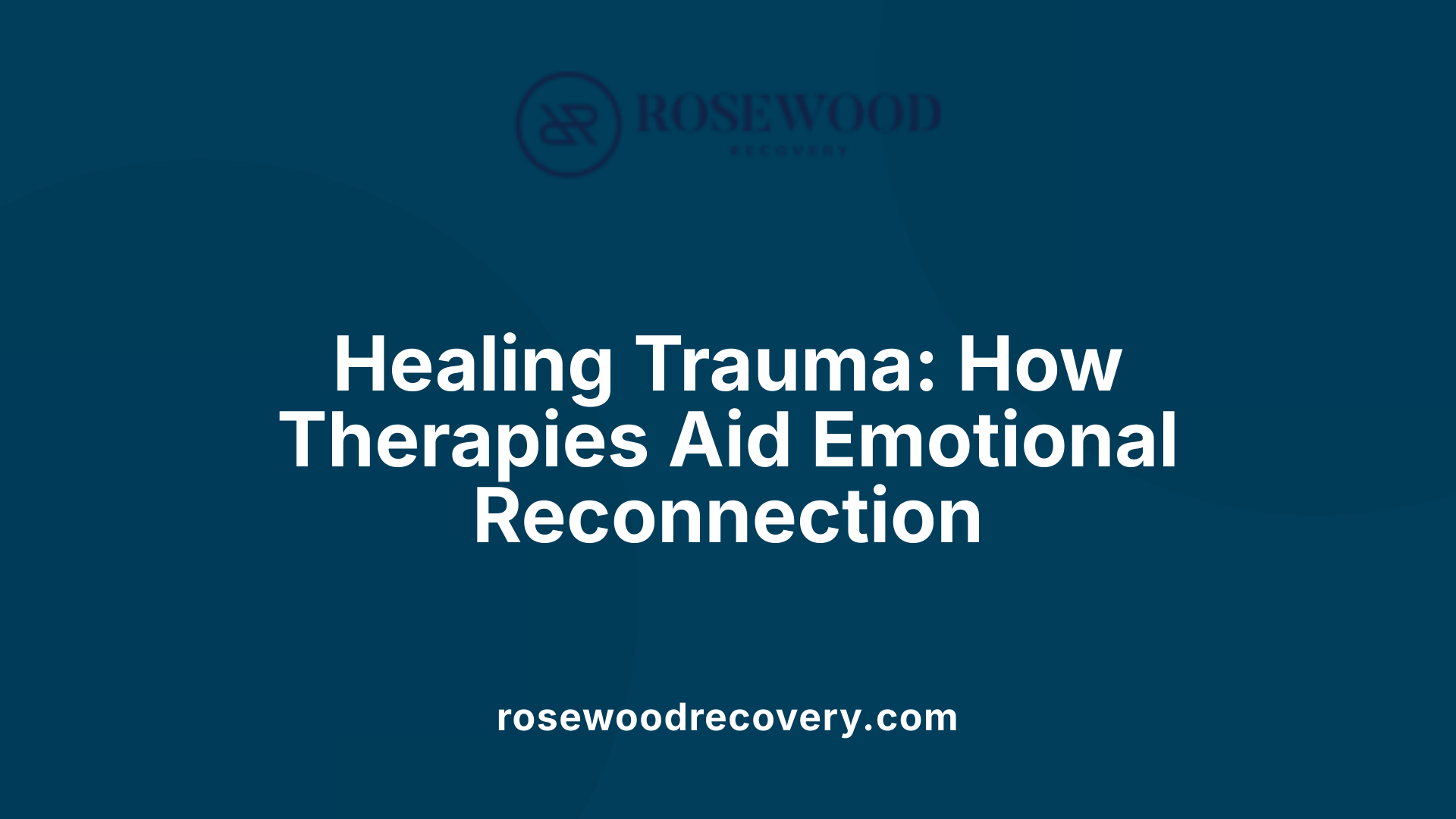
How can I heal from emotional disconnect?
Healing from emotional disconnect is a process that involves understanding the underlying causes such as trauma, attachment disruptions, or mental health challenges. Trauma-informed therapies play a crucial role in guiding individuals through recovery.
Cognitive Behavioral Therapy (CBT), Eye Movement Desensitization and Reprocessing (EMDR), and Dialectical Behavioral Therapy (DBT) are commonly used approaches. CBT helps individuals identify and challenge negative thought patterns that contribute to emotional numbness. EMDR is particularly effective for trauma-related emotional numbing, facilitating safe processing of past pain. DBT emphasizes mindfulness, emotional regulation, and distress tolerance, aiding clients in reconnecting with their feelings.
Building a trusting relationship with therapists is fundamental. Trust allows clients to feel safe in expressing vulnerable emotions and helps therapists tailor interventions effectively. Therapists focus on normalization and psychoeducation, explaining physiological responses—such as shutdown states or dissociation—that arise during trauma. Understanding that these reactions are natural functions of the nervous system helps clients feel validated and less ashamed.
Long-term strategies include mentalization-based therapy, which encourages clients to understand their own and others’ mental states. This approach promotes empathy, emotional understanding, and stronger interpersonal connections. Early intervention is vital. Recognizing warning signs like persistent numbness, withdrawal, or trouble engaging emotionally should prompt timely seeking of professional support, preventing deeper disconnection and promoting quicker healing.
Incorporating consistent self-care practices, fostering social connections, and applying emotional processing exercises can sustain recovery. Overall, an integrative approach combining trauma-informed therapies and ongoing support paves the way for meaningful reconnection with one’s emotional self.
Addressing Emotional Detachment and Developing Emotional Congruence
What is emotional detachment, and how can I recover?
Emotional detachment refers to an inability or unwillingness to connect with others on an emotional level. It often acts as a protective mechanism against pain, trauma, or overwhelming feelings. People experiencing emotional detachment may find it difficult to maintain relationships, show affection, or feel deeply connected. Symptoms include difficulty in forming bonds, a flat or numb emotional state, reduced empathy, and avoidance of situations or people linked to past pain.
This condition can develop gradually over time or suddenly following traumatic events, abuse, medication side effects, or conditioning during childhood. For some, it is a conscious choice to set boundaries or protect oneself in stressful situations. In contrast, involuntary detachment often results from trauma or mental health issues like PTSD or depression.
Recovery involves exploring and reconnecting with authentic feelings. Techniques such as body awareness and interoception—focusing on physical sensations and emotional signals—are fundamental. Engaging in expressive arts like painting, music, or dance helps access suppressed emotions.
Therapies such as mindfulness practices, art therapy, and establishing secure emotional relationships are crucial. Building psychological congruence, or consistently aligning inner feelings with outward expression, promotes healing and fosters a genuine sense of self. Over time, these efforts help restore emotional authenticity, enabling healthier connections and a more vibrant inner life.
Managing Relapse and Maintaining Emotional Resilience in Recovery
What are the stages of relapse?
Relapse happens gradually through three interconnected stages: emotional, mental, and physical. The first phase, emotional relapse, often occurs before anyone is aware. During this stage, individuals may notice feelings of stress, loneliness, anger, guilt, shame, boredom, or overconfidence. These emotional states often lead to behavioral changes such as bottling up feelings, withdrawing from social connections, neglecting self-care routines, and returning to previous habits or thought patterns.
If not addressed, emotional relapse can escalate into the mental stage, where obsessive thoughts about using substances or engaging in old behaviors dominate the mind. This mental preoccupation increases the likelihood of physical cravings, marking the physical relapse stage. Here, the person might experience tangible urges to act on old patterns, which can lead to substance use or other harmful behaviors.
Early recognition of the emotional and mental signs is vital. When the warning signs of bottling up emotions, withdrawal, neglect of self-care, or old habits surface, swift intervention is crucial. This can include reaching out for support, re-establishing recovery routines, practicing relaxation techniques, or engaging in activities that promote emotional stability.
Effective strategies in these early stages help prevent full-blown relapse. Support networks, therapy, and peer groups play significant roles in providing ongoing encouragement and accountability. Developing daily habits such as setting achievable goals, practicing patience, and building resilient coping skills strengthens long-term recovery and minimizes relapse risks.
Building a Supportive Environment for Lasting Emotional Health
Importance of community, peer support, and safe spaces
Creating a nurturing environment is essential for emotional recovery. Engaging with supportive communities and peer groups provides validation and understanding, which helps reduce feelings of isolation. Safe spaces, whether physical or virtual, encourage open sharing without fear of judgment, fostering trust and connection.
Utilizing online therapy and support groups
With the advent of telehealth, online therapy platforms like Betterhelp and Talkspace make professional support more accessible. Support groups, whether in person or online, offer shared experiences and practical advice, helping individuals feel less alone in their healing journey. These resources can be vital in developing coping skills and maintaining motivation.
The role of healthy boundaries and communication skills
Setting boundaries is crucial for protecting emotional well-being. Clear communication helps express needs and limits, preventing burnout and resentment. Learning assertiveness and active listening enhances relationships, creating a foundation of respect and safety.
Patience and long-term commitment in recovery
Lasting emotional health requires patience and consistent effort. Healing is often a gradual process, involving setbacks and breakthroughs. Developing resilience through goal-setting and self-compassion supports sustained progress, making recovery a journey rather than a quick fix.
Creating a future-focused outlook for emotional growth
Focusing on future possibilities encourages hope and motivation. Visualizing a healthier, fulfilled life can inspire ongoing effort. Incorporating mindfulness and gratitude practices helps shift attention from past pain to present growth, nurturing belief in positive change.
| Aspect | Benefits | Additional Notes |
|---|---|---|
| Community & Peer Support | Validation, shared experiences | Reduces isolation and fosters hope |
| Online Resources | Accessibility, convenience | Offers professional guidance and peer connections |
| Boundaries & Communication | Emotional safety, respect | Strengthens relationships and self-esteem |
| Patience & Commitment | Sustainable growth | Allows healing to unfold naturally |
| Future Outlook | Motivation, resilience | Supports long-term well-being |
Building an environment grounded in support, understanding, and proactive growth significantly enhances the chances of achieving emotional stability and resilience.
Pathways to Emotional Resilience
Overcoming patterns of emotional shutdown in recovery requires understanding the physiological roots of dissociation, recognizing early signs, and employing tailored strategies to reconnect with our feelings. Through trauma-informed therapies, grounding exercises, building trust, and developing emotional regulation techniques, individuals can restore emotional congruence and resilience. The journey involves patience, support, and a commitment to self-awareness, unlocking pathways to authentic connection, personal growth, and lasting recovery.
References
- Episode 023: Emotional Shutdown - Understanding Polyvagal Theory
- Emotional Numbness in Recovery: Why Feeling Nothing Can Be a ...
- Emotional Detachment: What It Is and How to Overcome It - Healthline
- Emotional Dysregulation | Pacific Shores Recovery
- How To Release Emotions Stuck In Your Body | PACEsConnection
- Emotional Repatterning Exercises: Rewire Your Reactions and ...
- Overcoming Emotional Numbness: 7+ Ways to Feel Alive Again
- Episode 021: How to Fix Emotional Detachment
- Everything You Need to Know About Emotional Relapse



.jpeg)
